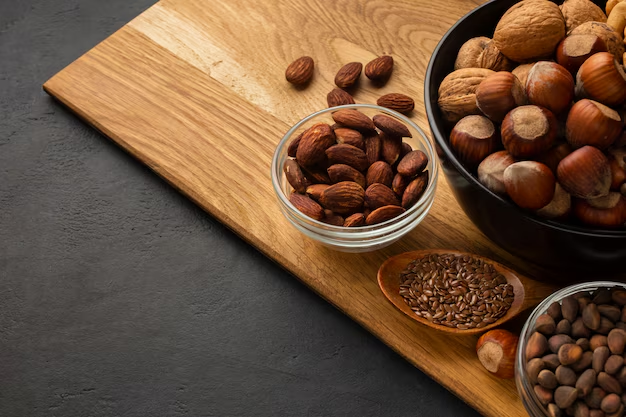A Complete Guide to Storing Boiled Peanuts in the Refrigerator: Ensure Freshness and Safety
Boiled peanuts are beloved for their soft texture and salty, savory flavor, especially throughout the southern United States. Whether you're a lifelong fan or a curious newcomer, knowing how to store boiled peanuts properly ensures you can savor their taste for as long as possible. So, how long will boiled peanuts keep in the refrigerator, and how can you maximize their shelf life? Let's delve into the best practices for storing this delicious snack, along with some useful tips and related insights that every boiled peanut enthusiast should know.
🌟 Understanding Boiled Peanuts
Before we dive into storage specifics, it's important to understand what boiled peanuts are. Essentially, they are raw or green peanuts — not roasted or processed — that are boiled in salty water, sometimes with added seasonings. This boiling process gives them a unique texture, quite different from the crunchy snap of roasted peanuts.
Benefits of Boiled Peanuts
Boiled peanuts are not only a tasty treat but also bring some nutritional benefits to the table. They are a source of protein, healthy fats, and fiber, along with essential vitamins and minerals. The boiling process may even enhance the bioavailability of some antioxidants, making them a balanced snack choice.
🤔 How Long Do Boiled Peanuts Last in the Refrigerator?
When it comes to storing boiled peanuts in the refrigerator, the general consensus among experts is that they can last up to 7 to 10 days while maintaining good quality. However, several factors influence this storage duration, such as how they're stored and the temperature of your refrigerator.
Factors Influencing Shelf Life
- Storage Method: Airtight containers or sealed bags work best to prevent drying out and absorb unwanted odors from other foods.
- Temperature Settings: Keep your fridge at a stable, cool temperature, ideally at or below 40°F (4°C), to minimize bacterial growth.
- Quality Upon Purchase: The fresher the peanuts were when they were boiled, the longer they will last in the fridge.
🥡 Proper Storage Techniques for Boiled Peanuts
Ensuring the quality and safety of your boiled peanuts begins with how you store them. Proper techniques can help maximize their shelf life and retain their flavorful characteristics.
Using Airtight Containers
An airtight container is critical for preserving boiled peanuts. This type of storage keeps moisture in and external odors and air out, maintaining the freshness and flavorful saltiness of the peanuts.
Steps to Follow:
- Allow the peanuts to cool before transferring them to containers.
- Use a container appropriate for the volume you're storing to reduce air exposure.
- Label the container with the date for easy tracking.
Utilizing Vacuum Sealed Bags
For those with a vacuum sealer, vacuum-sealed bags offer an excellent alternative. By removing air, these bags can help preserve the peanuts even longer.
Benefits of Vacuum Sealing:
- Reduces oxidation and moisture loss.
- Creates a compact storage volume, ideal for smaller refrigerators.
🍽️ Thawing and Reusing Stored Boiled Peanuts
After successfully storing your boiled peanuts, you'll eventually want to enjoy them again. How you handle them when taking them out for consumption can further affect their quality.
Reheat Properly
To bring back their original soft texture, reheating is key. Here’s how to do it effectively:
- Stovetop Method: Slowly warm the peanuts in a pot of salted water over low heat. This mimics the original boiling process.
- Microwave: Use a microwave-safe bowl with added water; cover loosely and heat in short bursts to prevent drying out.
- Oven method: Place them in an oven-safe dish with a small amount of water and cover with foil.
Keep Safety in Mind
- Always check for off odors or unusual textures as signs of spoilage.
- Consume reheated boiled peanuts within a day to ensure safety.
🌍 Exploring Related Topics
Understanding the storage of boiled peanuts opens a window into broader food storage principles and culinary practices. Here are some additional insights that may enrich your boiled peanut knowledge.
Comparing Boiled Peanuts to Other Nut Storage
Boiled peanuts differ significantly from their roasted counterparts in storage requirements due to moisture content. While roasted peanuts can be stored in a pantry for extended periods, boiled peanuts mandate refrigeration.
Origins and Cultural Significance
Boiled peanuts have deep cultural roots, particularly in the Southeastern United States, where they are a seasonal staple and often sold by roadside vendors. Learning about these aspects can deepen your appreciation for this unique snack.
Nutritional Considerations
Comparing nutrients in boiled versus roasted peanuts can provide insights into dietary choices that align with health goals.
📋 Summary: How to Store Boiled Peanuts for Maximum Freshness
- Use Airtight Containers or vacuum-sealed bags for best results.
- Maintain Refrigeration temperatures at 40°F (4°C) or below.
- Reheat in a way that maintains moisture and flavor—stovetop or microwave are effective methods.
- Check for Spoilage by observing color, smell, and texture before consumption.
🚀 Quick Tips
- Buy Fresh: Select the freshest green peanuts for boiling to extend subsequent storage time.
- Seal It Right: Double-check closures on containers and bags.
- Label and Track: Keep tabs on storage dates to manage consumption effectively.
In conclusion, with proper storage techniques and a little care, you can enjoy delicious boiled peanuts from your refrigerator with peace of mind. Whether you're preserving a southern tradition or newly exploring this delicacy, these guidelines ensure you can savor each salty, buttery soft bite to the fullest.
